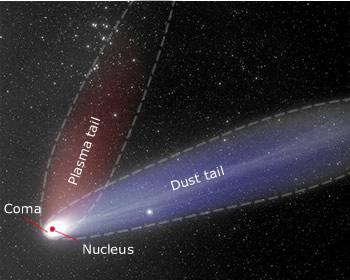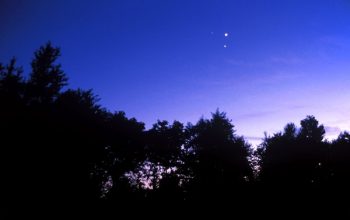Considered by many as the best annual sky watcher’s event, this August the Perseid meteor shower dazzles dark skies. Even though the shower reaches its peak the 11th through the 13th, often the best time to view, do not neglect the nights leading up to shower’s climax. Often they can be just as magnificent. Click here to calculator when the moonrise and moonset will occur near your area. Moonlight will interfere with the quality of viewing, so it is best to observe after moonset. Meteor showers receive their names from the closest constellation that they pass through. To locate the Perseids, look to the constellation Perseus in the Northern Hemisphere.
Meteors are small particles originating from a comet or an asteroid orbiting the sun. Particles-or meteoroids- left over from a comet known as Swift-Tuttle create the meteors we will see decorate the night sky with luminous streaks in the coming days. 2016 is an especially great year for viewing the Perseids. During the peak, a phenomena referred to as an outburst will double the number of meteors per hour from an average of 100 to 200. That is enough to grant many wishes upon “shooting stars”, a term widely used yet completely incorrect. (If stars flew into the Earth’s atmosphere at the distance and speed of a meteor, the planet’s crust would fry and the atmosphere dwindle away as the first “star” closed in on us. With no atmosphere to shield us, the charged particles of the sun and the incoming star would obliterate all life on Earth. Perhaps a “shooting meteor” substitutes better, although undeniably “shooting star” sounds much more magical. I digress.)
Similar to giant cosmic snow cones, comets are composed of frozen gases, rocks, and dust particles. When approaching the sun during its orbit, an atmosphere surrounds the comet, known as a Coma, potentially measuring thousands of kilometers in diameter. This creates the fuzzy visual appearance which distinguishes a comet from the stars in the sky. It is believed comets may have delivered the ingredients to life on Earth millions of years ago in the early stages of the solar system. The ESA’s Rosetta mission recently discovered carbon monoxide, carbon dioxide, ammonia, methane, and methanol in the Coma of Comet 67P/ /Churyumov–Gerasimenko. These chemicals were common during the evolution of biodiversity on our planet, furthering the theory that comets gave Earth the breath of organic life.
Swift-Tuttle passed near Earth in 1992, and will not return until 2126. Its orbit period is 133 years. Short period comets, those which complete a full orbit in under 200 years, originate from an icy domain known as the Kuiper Belt, located 30 to 55 AU from Neptune’s orbit. The comet’s nucleus measures 16 miles in diameter, twice the size of the one that crashed into Earth 66 million years ago and wiped out the dinosaurs. Lucky for us, Swift-Tuttle will not reenact a similar fate.
Enjoy this annual summer treat for those in the Northern Hemisphere!
– Julia
Published by Julia Mariani
Sources: NASA Solar System Exploration, Space.com, University of Arizona, Earth and Sky.






